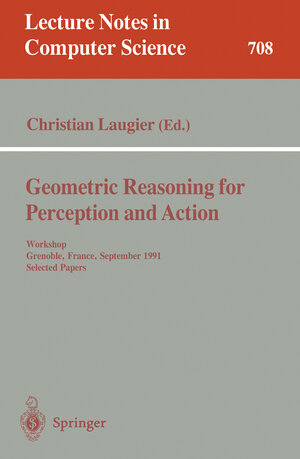
×
![Buchcover ISBN 9783540479130]()
Geometric Reasoning for Perception and Action
Workshop. Grenoble, France, September 16-17, 1991. Selected Papers
herausgegeben von Christian LaugierGeometry is a powerful tool to solve a great number of
problems in robotics and computer vision. Impressive results
have been obtained in these fields in the last decade. It is
a new challenge to solve problems of the actual world which
require the ability to reason about uncertainty and complex
motion constraints by combining geometric, kinematic, and
dynamic characteristics. A necessary step is to develop
appropriate geometric reasoning techniques with reasonable
computational complexity.
This volume is based on a workshop held in Grenoble,
France, in September 1991. It contains selected
contributions on several important areas in the field of
robotics and computer vision. The four chapters cover the
following areas:
- motion planning with kinematic and dynamic constraints,
- motion planning and control in the presence of
uncertainty,
- geometric problems related to visual perception,
-numerical problems linked to the implementation of
practical algorithms for visual perception.
problems in robotics and computer vision. Impressive results
have been obtained in these fields in the last decade. It is
a new challenge to solve problems of the actual world which
require the ability to reason about uncertainty and complex
motion constraints by combining geometric, kinematic, and
dynamic characteristics. A necessary step is to develop
appropriate geometric reasoning techniques with reasonable
computational complexity.
This volume is based on a workshop held in Grenoble,
France, in September 1991. It contains selected
contributions on several important areas in the field of
robotics and computer vision. The four chapters cover the
following areas:
- motion planning with kinematic and dynamic constraints,
- motion planning and control in the presence of
uncertainty,
- geometric problems related to visual perception,
-numerical problems linked to the implementation of
practical algorithms for visual perception.



